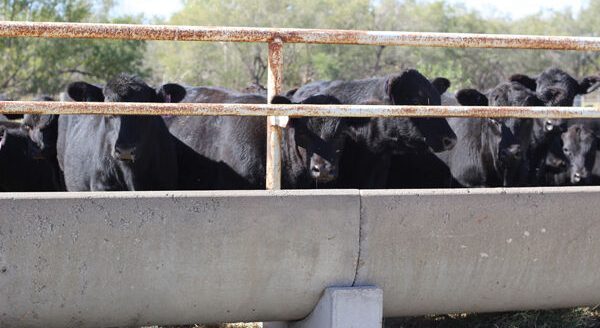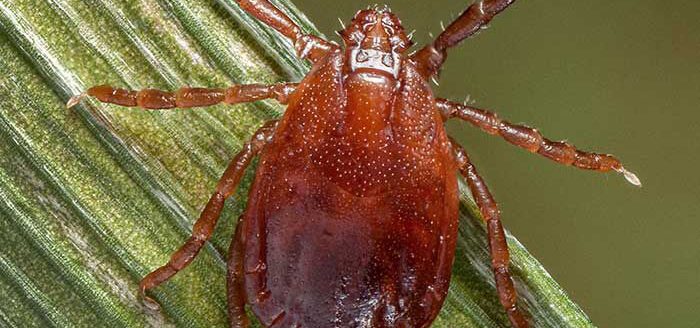If Santa has a breakdown delivering toys this year, he need only stop at Reindeer Club in Bristow, Oklahoma, to call in reinforcements. Nick Ledbetter and his family got the idea to start a reindeer operation years ago at a Christmas event.
“My wife and I took our children to ride the Polar Express Train in Bristow, and afterwards, my son, Parker, who was 8 years old at the time, asked why we always see Santa Claus, Mrs. Claus and the elves, but we never see the reindeer,” Ledbetter said.
Naturally, an idea like reindeer in Oklahoma could only come from the mind of a child—brimming with imagination and the mentality that anything is possible—and Ledbetter agreed. He began researching what he needed to do to own reindeer in Oklahoma, and Reindeer Club was born. For four years now, Ledbetter has been traveling the United States with his reindeer during November and December, attending events and parties of all kinds.
When they are on the road with their stock, Ledbetter often books houses to stay in on websites like HomeAway and Airbnb. The only caveat is they have to have a paddock or stall for the reindeer to be comfortable. Some veterinarians will also board reindeer at clinics.
Ledbetter says he is the only person to own and display reindeer in Oklahoma, but he does not do it without abundant knowledge of these animals. The reindeer are atypical and so is Ledbetter; he has been called the unofficial reindeer expert for Oklahoma. The Ledbetters own six reindeer: three bulls and three cows.
When he is not busy playing reindeer games during the holiday season, Ledbetter is running a lawn care business.
“I wish this could be my full-time job, but unfortunately reindeer are very popular about mid-November until Christmas Day. Dec. 26, they’re back to just being our pets.”
Raising up Rudolph
Reindeer are a long way from the North Pole in Oklahoma, and being in such a different climate brings certain challenges. Ledbetter says reindeer can be difficult to keep alive, but with research and the right connections he always puts the health of his deer first. In fact, Reindeer Club has never lost any deer.
Although they are made for frigid temperatures, the reindeer have adapted well to a polar opposite climate. To beat the heat in the summer, Ledbetter says he uses industrial-size fans and Portacools, but the heat has not been any more difficult for the reindeer than horses or cattle. Fortunately for the deer, they do not have to sweat through summer in their winter coats; instead they slick off like a horse and turn chocolate brown. Then they develop their trademark flaxen and brown fluffy fur in the wintertime.
So far Ledbetter has not started breeding any reindeer because their breeding season coincides with the Christmas display season when the deer are on the road attending events. However, he hopes to eventually expand to a breeding program. He says most of the reindeer breeding operations are in Minnesota and Michigan.
To purchase a male and female pair of deer right now, Ledbetter estimated the cost at $25,000. He said a male could probably be bought for $10,000 while a female would be around $12,000. He says the demand for reindeer right now is extremely high.
So far, the three males at Reindeer Club are intact, but Ledbetter says he has plans to castrate two bulls this year. Castrating the bulls will allow them to keep their antlers through the Christmas display season for all to enjoy.
“Both bulls and cows grow antlers,” Ledbetter explained. “The females keep their antlers until mid-February into March. The males have already started dropping antlers in October and November so no one ever gets to see their beautiful antlers if they aren’t castrated. There is a lot of debate on when to do it because you can stunt the growth of the antlers depending on when castration is done.”
A reindeer can grow to 5 feet, 9 inches tall. A male can get up to 400 pounds and a female up to 260 pounds.
Leaving cookies for Santa is a tradition, but what do reindeer eat? Ledbetter says they are not big grazers and, in fact, their paddocks have to be mowed. A nutritionist in Michigan formulates the reindeer rations and the local mill mixes up the feed. Ledbetter says some of the ingredients include corn, wheat millings, canola meal, cottonseed meal, flaxseed meal and proprietary vitamins.
“Copper is also very important to a reindeer’s system,” Ledbetter added. “Some people have to give copper boluses if the soil is copper deficient.”
Reindeer are also unique when it comes to feed intake.
Sign up for HPJ Insights
Our weekly newsletter delivers the latest news straight to your inbox including breaking news, our exclusive columns and much more.
“This time of year their appetite has shrunk,” Ledbetter said. “In the spring or summer they’ll eat 5 to 6 pounds of feed a day, but once it gets wintertime their appetite decreases as if they were still up north and wouldn’t have as much food to eat. Late fall to early winter, they may only eat a pound to a pound-and-a-half of feed a day.”
A carrot a day keeps the doctor away
In Oklahoma, reindeer are not considered wildlife or exotic animals but rather livestock. Reindeer are treated like a hybrid of cattle, horses, goats and sheep. They are ruminants, but they are often treated with equine and bovine pharmaceuticals. There is not a reindeer veterinarian in Oklahoma, but Reindeer Club adapts the same way their deer adapt to Oklahoma’s climate. Ledbetter works closely with his local vet, who is also in contact with the University of Alaska’s reindeer experts.
“They keep up with the reindeer and monitor they’re progress because of how far south we are,” Ledbetter said. “They want to know how they grow and how a warmer climate affects them. We can always get on the phone with our people there and get opinions if we have a reindeer problem, and our vets work with them because they don’t have experience with tick-borne diseases like we have here.”
Reindeer are not built to deal with ticks because these arachnids do not exist in the Arctic. Parasites like babesia, which are Apicomplexan parasites that infect red bloods cells, are transmitted by ticks and cause the disease babesiosis—a major concern for reindeer. A few cases have been recorded of infected mammals in Oklahoma.
Another infectious disease reindeer are susceptible to is tuberculosis, which is a disease caused by bacteria that attack the respiratory system. To travel out of state, Ledbetter’s reindeer have to be tested for this disease every three years.
Reindeer can also contract brucellosis, which is caused by an infection. Ledbetter’s reindeer have to be tested for the disease every time they leave the state because of it is so contagious.
Deer in general are known for being carriers of diseases, and Chronic Wasting Disease is one that often comes to mind. CWD is a transmissible spongiform encephalopathy of the deer family. Basically, CWD is a disease without a cure where the animal slowly wastes away and dies. Much like rabies, you can only test for CWD on a deceased animal.
“It’s not so much about deer transferring CWD from one deer to another,” Ledbetter explained. “It’s when a deer dies of CWD and it’s eaten by scavengers like coyotes or birds, the disease spreads when the animal defecates on the ground. When grass grows there, it will contain the prions of CWD. If another animal comes along and grazes there it will contract it. They have yet to find anything, whether it be heat or cold that will kill the prion. Reindeer are listed as a non-susceptible species for CWD, but they are a member of the deer family so they have the capability of contracting some of these diseases.”
In fact, certain states like Louisiana and Arkansas do not allow anyone to own reindeer at all. However, they make an exception for November and December and allow operations like Reindeer Club to obtain permits to bring reindeer in during those months. This year disease control has affected the scheduling of Reindeer Club’s Christmas events. Ledbetter says there is a suspected case of CWD in a reindeer in Illinois, causing restrictions.
“We’ve done a lot of business in Louisiana and we actually supply the New Orleans Saints with reindeer,” Ledbetter explained. “Louisiana shut borders down to any deer coming in because of CWD. We lost four or five big venues because of it.”
Oklahoma is considered a CWD-free state, so Ledbetter’s deer are listed as CWD-free because of where they come from. However, if a case were to be diagnosed, the regulations for Oklahoma would become extremely strict and would have a big impact on Reindeer Club. However, he says the more they can learn about CWD, the more likely they can protect their reindeer—and other livestock—from coming in contact with it.
For Ledbetter, the health of his reindeer and the joy he gets from introducing one of his deer to a group of people who have probably never seen a live reindeer is the best present at Christmastime.
“My favorite part of having reindeer is seeing the little faces as soon as the deer come in,” he said. “I grew up in Oklahoma, I’m 40 years old, and I never once saw a live reindeer until I started this. It is so fun to walk into an event with kids and their eyes get as big as coffee cups when they realize this is something they have only seen in books or in movies. To them, a reindeer was as mythical as an elf and now it is literally standing right in front of them.”
Lacey Newlin can be reached at [email protected].



